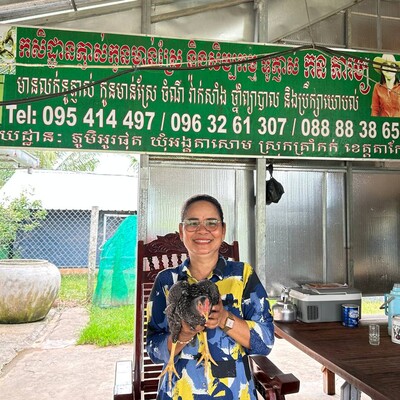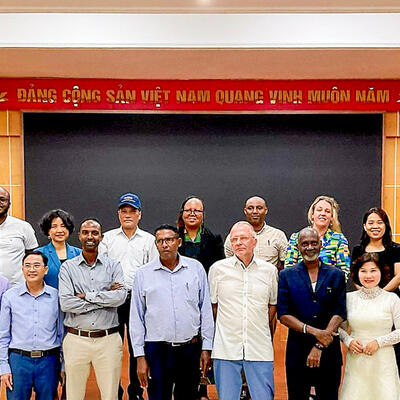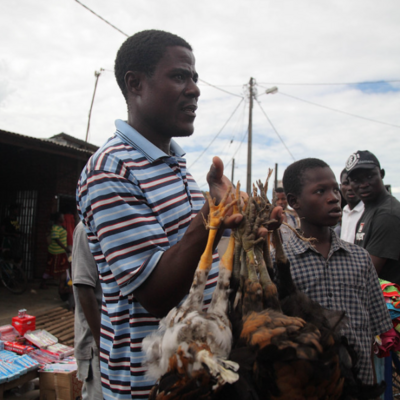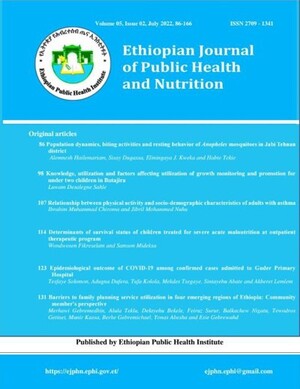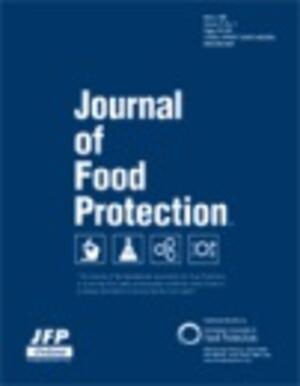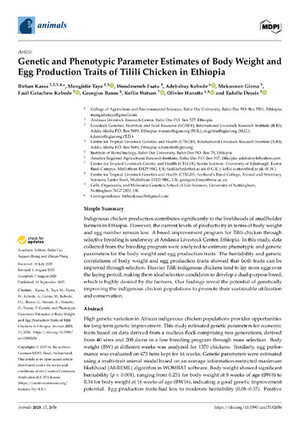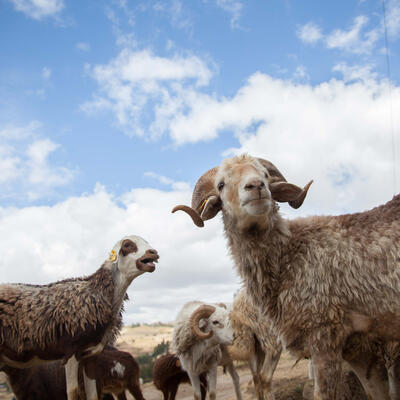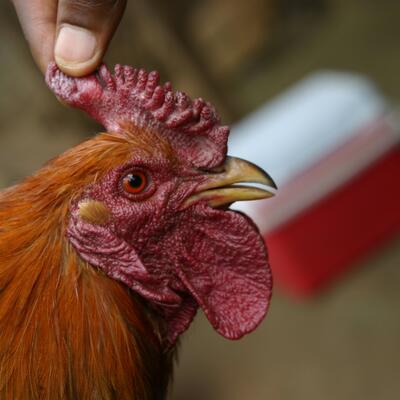
Where chickens and women rule: ACGG rolls out gender awareness campaign
African Chicken Genetic Gains (ACGG) is a research for development program which tests and makes available high-producing, farmer-preferred chicken genotypes to farmers in Africa. The program is developing and increasing access to the preferred chicken strains for smallholder farmers in Ethiopia, Nigeria and Tanzania.
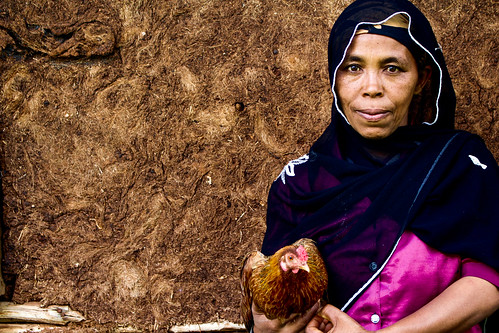
A chicken farmer in Ethiopia (photo credit: ILRI/ Camille Hanotte).
This program is not about linear ‘technology transfer’ of farmer preferred chicken strains. The preferred technologies are being disseminated in collaboration with end users and in recognition of, and in response to, farmers’ needs.
For example, women farmers play a key role in the smallholder poultry sector in the three countries and there is a direct link between chicken-related interventions and women’s empowerment. Improved poultry production also leads to increases in household animal protein consumption and other benefits for the entire family. Consequently, women’s preferences in terms of chicken trait are a key part of the ACGG germ plasm selection and development process.
Gender roles and responsibilities and the division of labour, management and benefits, feature centrally in ACGG interventions. But the program also gives attention to the wider group of stakeholders, such as the youth, and their needs.
This year, gender issues are being addressed in a five-month ‘In focus’ ACGG awareness and communication campaign starting in April 2017.
Where chickens and women rule
This ‘gender’ campaign is known as ‘where chickens and women rule’ and is the first of a series of ‘in focus’ awareness campaigns aimed at raising the awareness of the public and of ACGG’s audiences about the gender stakes in poultry development.
In particular, the campaign is exploring the ‘critical moments’ that affect women farmers in poultry production and that could be preventing them from enjoying the full benefits of keeping chickens.
These critical moments include:
- When poultry at household becomes more productive and profitable, are there changes in decision-making at household level on how the birds are used, and proceeds of birds invested back in the household?
- Once the roosters reach 20 weeks, what decisions are made (by who) about use for profit or own consumption?
- During community innovation platforms, what follow up actions are emerging from each meeting (e.g. aggregation to buy feed, vaccines, microfinance) and what are the implications of these on women’s positions in the poultry value chain?
From initial scoping, it seems that chicken rearing is a 70% a women’s affair in Africa. But a closer look reveals that across the poultry value chain, women mostly occupy the position of producers. How can they enjoy significant gains (from the market or otherwise) through their involvement in this activity and how can they position themselves vis-a-vis other stages of the value chain?
The campaign will be in two phases:
- From April to June 2017, it will focus on ‘the gender situation as it is’ in the ACGG countries. That phase of the campaign will feature important pieces of ACGG work to understand the current gender situation. This will include reviewing the overall inception gender strategy report, country inception reports, capacity assessment reports and the Going Places initiative which looks at ethnography and archaeology and bears important gender implications in Ethiopia.
- From September to October 2017, the campaign will shift its focus towards ‘what is ACGG doing about this gender situation’. That phase will end with the final gender strategy, which will be developed together with ACGG country teams in Ethiopia, Nigeria and Tanzania and validated at a workshop in September.
Occasional sharing of information may also happen in July and August as part of this campaign and beyond the campaign, gender work will continue. Some of the longer-term gender outputs might relate to the realignment of ACGG’s monitoring and evaluation framework with gender, to coming up with present more ‘gender-aware’ indicators.
How to follow the campaign?
This awareness campaign will feature a series of web stories, pictures, videos and publications that were developed by the ACGG team to both a) understand the current situation and b) position the ACGG approach and ambitions with regards to gender-related outcomes of the program.
You can follow this gender campaign through:
- Posts on this website
- Publications on CGSpace (search for ‘gender’)
- Tweets on Twitter using #GenderACGG, #AfriChickGen or #ACGG
- Photos on FlickR and Pinterest
At all times, you can find this list of campaign outputs on the ‘In focus’ page. You can also find some internal resources on the gender page of the ACGG team’s work space.
See the ‘In focus’ page and find all outputs related to the campaign: https://africacgg.net/in-focus/






